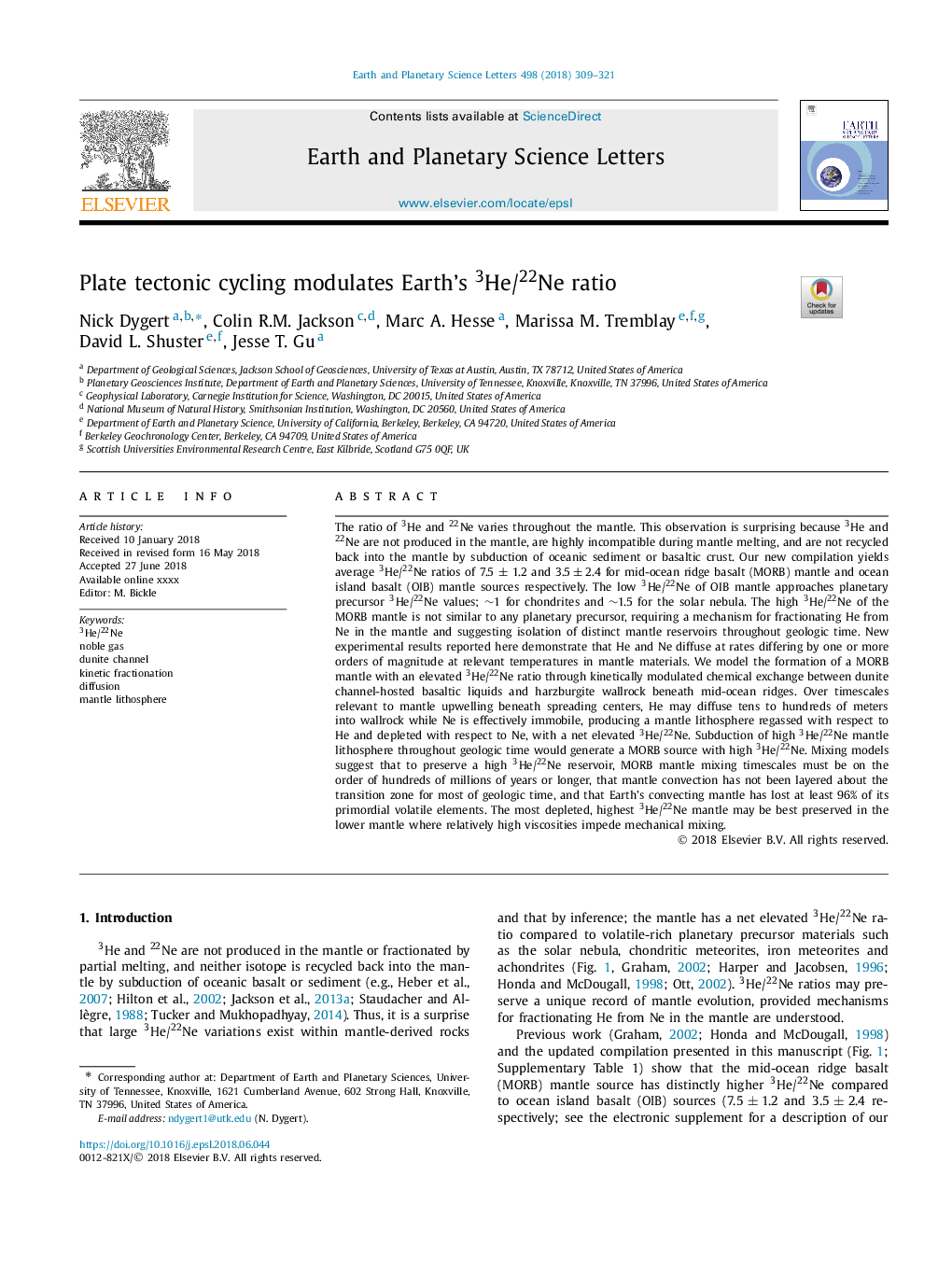| کد مقاله | کد نشریه | سال انتشار | مقاله انگلیسی | نسخه تمام متن |
|---|---|---|---|---|
| 8906727 | 1634658 | 2018 | 13 صفحه PDF | دانلود رایگان |
عنوان انگلیسی مقاله ISI
Plate tectonic cycling modulates Earth's 3He/22Ne ratio
دانلود مقاله + سفارش ترجمه
دانلود مقاله ISI انگلیسی
رایگان برای ایرانیان
کلمات کلیدی
موضوعات مرتبط
مهندسی و علوم پایه
علوم زمین و سیارات
علوم زمین و سیاره ای (عمومی)
پیش نمایش صفحه اول مقاله

چکیده انگلیسی
The ratio of 3He and 22Ne varies throughout the mantle. This observation is surprising because 3He and 22Ne are not produced in the mantle, are highly incompatible during mantle melting, and are not recycled back into the mantle by subduction of oceanic sediment or basaltic crust. Our new compilation yields average 3He/22Ne ratios of 7.5 ± 1.2 and 3.5â¯Â±â¯2.4 for mid-ocean ridge basalt (MORB) mantle and ocean island basalt (OIB) mantle sources respectively. The low 3He/22Ne of OIB mantle approaches planetary precursor 3He/22Ne values; â¼1 for chondrites and â¼1.5 for the solar nebula. The high 3He/22Ne of the MORB mantle is not similar to any planetary precursor, requiring a mechanism for fractionating He from Ne in the mantle and suggesting isolation of distinct mantle reservoirs throughout geologic time. New experimental results reported here demonstrate that He and Ne diffuse at rates differing by one or more orders of magnitude at relevant temperatures in mantle materials. We model the formation of a MORB mantle with an elevated 3He/22Ne ratio through kinetically modulated chemical exchange between dunite channel-hosted basaltic liquids and harzburgite wallrock beneath mid-ocean ridges. Over timescales relevant to mantle upwelling beneath spreading centers, He may diffuse tens to hundreds of meters into wallrock while Ne is effectively immobile, producing a mantle lithosphere regassed with respect to He and depleted with respect to Ne, with a net elevated 3He/22Ne. Subduction of high 3He/22Ne mantle lithosphere throughout geologic time would generate a MORB source with high 3He/22Ne. Mixing models suggest that to preserve a high 3He/22Ne reservoir, MORB mantle mixing timescales must be on the order of hundreds of millions of years or longer, that mantle convection has not been layered about the transition zone for most of geologic time, and that Earth's convecting mantle has lost at least 96% of its primordial volatile elements. The most depleted, highest 3He/22Ne mantle may be best preserved in the lower mantle where relatively high viscosities impede mechanical mixing.
ناشر
Database: Elsevier - ScienceDirect (ساینس دایرکت)
Journal: Earth and Planetary Science Letters - Volume 498, 15 September 2018, Pages 309-321
Journal: Earth and Planetary Science Letters - Volume 498, 15 September 2018, Pages 309-321
نویسندگان
Nick Dygert, Colin R.M. Jackson, Marc A. Hesse, Marissa M. Tremblay, David L. Shuster, Jesse T. Gu,